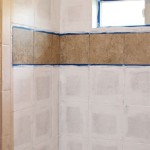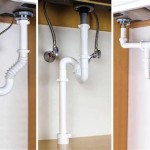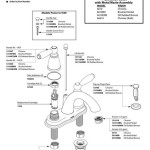What Is The Difference Between Dulux Kitchen and Bathroom Paint?
When embarking on a decorating project in rooms prone to moisture and humidity, selecting the appropriate type of paint is paramount. Kitchens and bathrooms present unique challenges compared to other areas of the home. They are subject to fluctuating temperatures, high humidity levels, and potential splashes and spills. As a result, standard emulsion paints may not provide sufficient protection against mold, mildew, and general wear and tear. Dulux, a prominent paint manufacturer, offers specialized formulations specifically designed for kitchen and bathroom environments. Understanding the differences between Dulux Kitchen and Bathroom paints is crucial for achieving a durable and aesthetically pleasing finish.
While both Dulux Kitchen and Bathroom paints are designed to withstand the demands of these moisture-rich environments, their formulations and intended uses differ slightly. These differences are reflected in their specific properties, such as moisture resistance, stain resistance, and ease of cleaning. Choosing the correct paint type ensures longevity of the paint finish and protection of the underlying surfaces.
Key Point 1: Moisture Resistance and Anti-Mold Properties
The primary distinction between Dulux Kitchen and Bathroom paints lies in their formulation regarding moisture resistance and anti-mold properties. Bathroom paint is typically formulated with a higher concentration of biocides and fungicides, which inhibit the growth of mold and mildew. Bathrooms are consistently exposed to higher humidity levels than kitchens, particularly during and after showering or bathing. This creates an ideal environment for mold and mildew to thrive. Therefore, bathroom paint prioritizes protection against these microbial growths.
Dulux Bathroom paint often incorporates advanced technologies to create a more robust barrier against moisture penetration. This barrier prevents water from seeping into the paint film and reaching the underlying substrate, which can lead to paint blistering, peeling, and structural damage to the wall. The enhanced moisture resistance also helps to maintain the paint's integrity and appearance over time, preventing discoloration and fading caused by prolonged exposure to humidity.
Dulux Kitchen paint, while also offering moisture resistance, may not contain the same high concentration of biocides and fungicides as bathroom paint. Kitchens tend to experience sporadic bursts of humidity related to cooking activities, rather than the constant high humidity found in bathrooms. The primary focus of kitchen paint is to withstand everyday splashes and spills, maintain a wipeable surface, and resist grease and food stains.
The difference in biocide concentration reflects the differing environmental challenges faced by each room. Using bathroom paint in a kitchen is not detrimental, as it provides a higher level of protection. However, using kitchen paint in a bathroom may compromise the paint's long-term performance and increase the risk of mold and mildew growth, particularly in poorly ventilated bathrooms.
Key Point 2: Stain Resistance and Cleanability
Another significant difference between Dulux Kitchen and Bathroom paints is their stain resistance and cleanability. Kitchens are prone to a wider variety of stains, including grease splatters, food spills, and cooking fumes. Consequently, Dulux Kitchen paint is formulated with enhanced stain resistance properties, making it easier to wipe away everyday messes without damaging the paint finish.
Dulux Kitchen paint often incorporates additives that reduce the surface tension of the paint film. This makes it more difficult for stains to penetrate the paint and adhere to the surface. The resulting surface is typically more non-porous and easier to clean with a damp cloth or mild detergent. This ensures that the kitchen walls remain clean and hygienic, even in high-traffic areas around the stove and sink.
Dulux Bathroom paint also offers good cleanability, but its primary focus remains on moisture resistance and anti-mold properties. While it can withstand general cleaning, it may not be as resistant to heavy-duty grease and food stains as kitchen paint. The formulation of bathroom paint prioritizes creating a smooth, non-porous surface that is resistant to water absorption and mold growth, which inherently contributes to its cleanability.
The choice between Dulux Kitchen and Bathroom paint should be guided by the specific cleaning requirements of each space. If the kitchen is prone to frequent spills and splatters, opting for kitchen paint with its enhanced stain resistance is recommended. In bathrooms, where humidity and mold are the primary concerns, the superior moisture resistance and anti-mold properties of bathroom paint are more crucial. Both paints offer washable surfaces, but the degree of stain resistance varies.
Key Point 3: Finish and Durability
The finish and durability of Dulux Kitchen and Bathroom paints also contribute to their suitability for their respective environments. Both types of paint are typically available in a range of finishes, including matt, silk, and soft sheen. However, the specific properties of these finishes may differ slightly between the kitchen and bathroom formulations.
Dulux Kitchen paint often favors a more durable and scrubbable finish. The paint film is designed to withstand frequent cleaning without losing its color or sheen. This is particularly important in kitchens, where walls are often wiped down to remove grease and food stains. The enhanced durability ensures that the paint finish remains intact and aesthetically pleasing, even after repeated cleaning.
Dulux Bathroom paint, while also durable, places a greater emphasis on creating a smooth, water-resistant surface. The paint film is typically more flexible and resistant to cracking or peeling in response to fluctuating temperatures and humidity levels. This helps to maintain the integrity of the paint finish and prevent moisture from penetrating the underlying substrate.
The choice of finish ultimately depends on personal preference, but the specific properties of the finish should be considered in relation to the environmental challenges of each room. In kitchens, a durable and scrubbable finish is essential for maintaining a clean and hygienic environment. In bathrooms, a flexible and water-resistant finish is crucial for preventing moisture damage and mold growth. The availability of different finishes in both kitchen and bathroom paints allows for customization while still providing the necessary protection.
Furthermore, the overall durability of both paint types is enhanced through the use of high-quality pigments and binders. These components contribute to the paint's resistance to fading, discoloration, and chipping. The long-lasting durability ensures that the paint finish remains attractive and functional for years to come, reducing the need for frequent repainting.
In summary, the selection between Dulux Kitchen and Bathroom Paint requires careful consideration of the specific needs and environmental conditions of each room. While both are designed for humid environments, bathroom paint prioritizes mold resistance, and kitchen paint focuses on superior stain resistance and cleanability. By understanding these key differences, consumers can make informed decisions to protect their walls and enhance the aesthetic appeal of their kitchens and bathrooms.

Dulux White Ceiling Plus Kitchen And Bathroom Paint Paintmate Com Au

Kitchen And Bathroom Paint 8 Tips To Getting It Right

Dulux Wash Wear Plus Kitchen Bathroom Low Sheen 4l

Dulux Easycare Kitchen Timeless Matt Emulsion Paint 2 5l Diy At B Q

Dulux Easycare Grease Resistant Kitchen Paint

Dulux Bathroom Paint Colours

Dulux Wash Wear Plus Kitchen Bathroom Low Sheen

Diy Painting Project To Bring Your Kitchen Life Dulux

Dulux Bathroom Paint Colours

Dulux Bathroom Paint Colours







